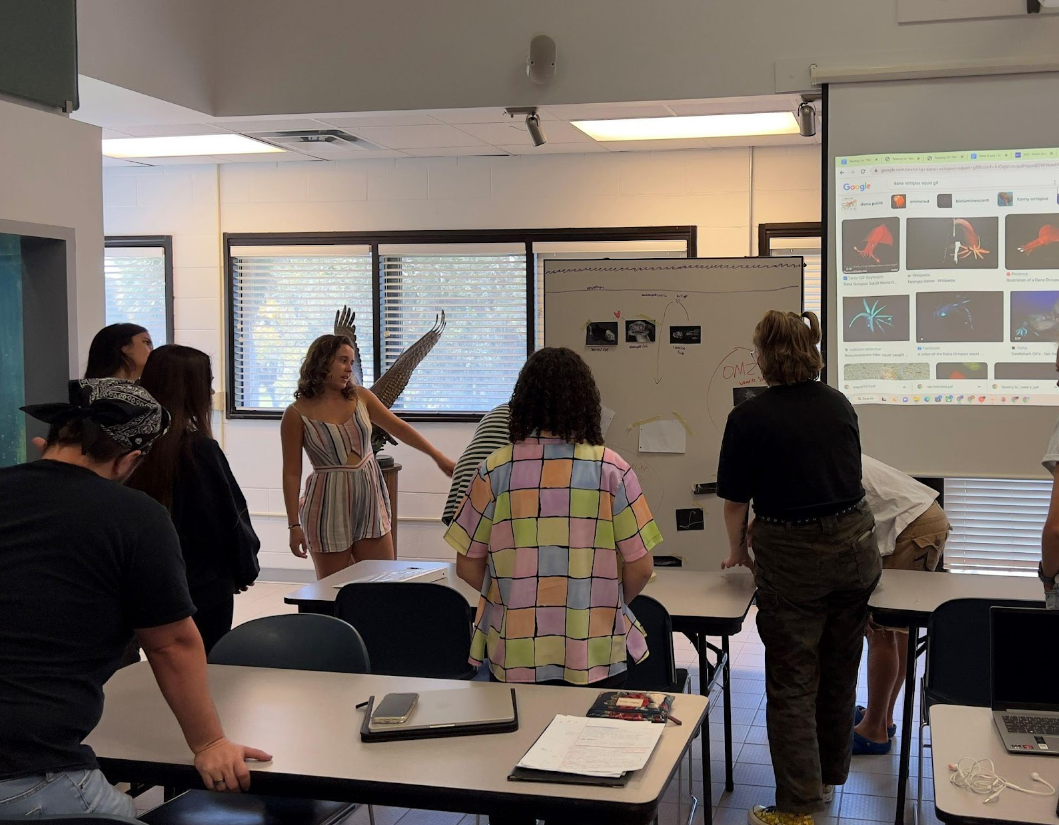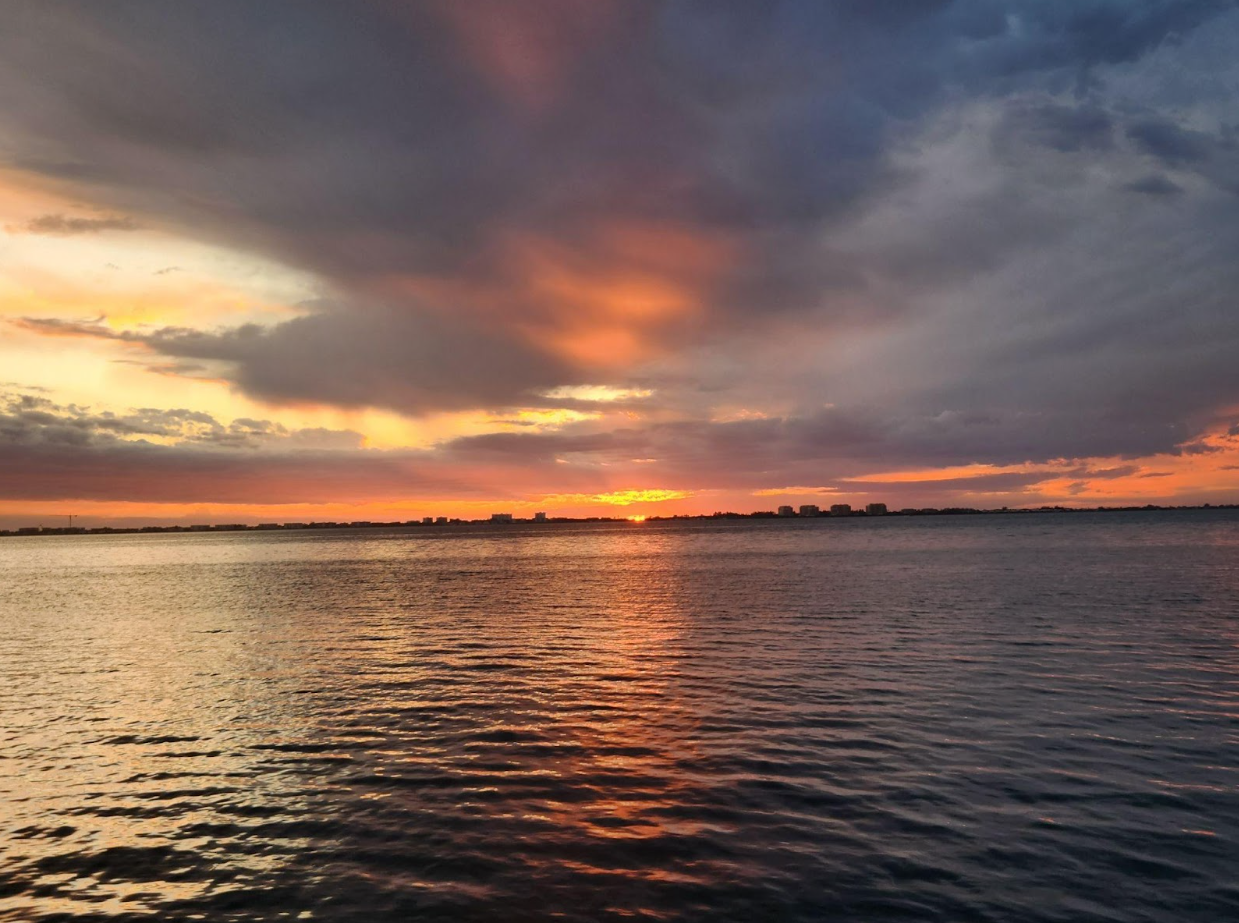Students wondering about the deep sea, what lingers below the surface or how the environment supports life forms will have a chance to find answers in this semester’s Deep Sea Environment tutorial.
A different version of this tutorial was offered in the 2022-2023 Spring semester, providing students with the opportunity to explore the deep-sea biodiversity of the ocean. This semester’s tutorial will give students a chance to learn about the environment as a new deep sea topic. There are no prerequisites and everyone is welcome. This tutorial is led by students Andy Koenig and Laura Goretti, with Assistant Professor of Coastal and Marine Science Dr. Toro-Farmer as faculty sponsor for the semester. Koenig is a third-year with an Area of Concentration (AOC) in Marine Biology and a secondary AOC in Deep Sea Biology. Goretti is a third-year also studying Marine Biology with a secondary AOC in Deep Sea Biology.
This tutorial addresses a variety of topics such as the key physical, chemical, geological and biological characteristics of the deep sea environment, as well as conservation and human impacts on the ocean. Students will learn how the environment is formed and how it can sustain life in such intense conditions. The overall goal of this course is to teach students an appreciation and understanding of the deep sea.
Students will address foundational topics such as “defining the deep sea, its vertical zonation into bathyal, abyssal and hadal zones, and the geographical distribution of features like trenches and seamounts,” listed in the course description. Other topics include deep sea sediments, food webs and energy sources.
This course is “full term, modular credit” and lasts for the duration of the Fall semester. Students will learn a new topic each week through slides, videos, readings and lectures coupled with weekly quizzes and a final project at the end of the term. The tutorial also provides learning surveys, which students will fill out in order to provide feedback to the instructors regarding the information they learned that week. This allows the instructors to adjust the tutorial schedule as needed to accommodate students.

Meet the Instructors
Koenig thought of the tutorial about a year ago as he was planning the first-ever degree in Deep Sea Biology at New College. There have been various Marine Biology degrees; however, he has set his sights on studying the deep sea. He separated the idea for a tutorial into five separate sections: Deep Sea Biodiversity, Deep Sea Physical Environment, Deep Sea Pelagic and Benthic Environments, Deep Sea Physiology and Deep Sea Chemistry and Physics. Koenig plans on offering each of these sections as tutorials until he graduates.
When asked about organizing a tutorial during an email interview with the Catalyst, Koenig responded, “It is no easy task but we manage it as best we can.”
The two students must master the topic themselves in order to go on to lead it. They must prepare presentations, readings and quizzes as well as take their own courses in order to maintain a good academic standing. Goretti’s involvement is appreciated by Koenig. He explained that Goretti approached him, asking to assist in the making of the tutorial.
“I am really glad she did because there’s no way I could handle all of the work on my own and she has had many great ideas that have helped so much!” Koenig stated.
Goretti has spent her previous college years studying Marine Biology as a whole and has built up experience with the topic. She became interested in the Deep Sea Environment “So I saw this as a great opportunity to develop skills, learn about the deep sea, have something really special on my resume and work with a good friend who definitely needed help to make his dream come true,” Goretti stated in an email interview.
When asked about the workload of creating a tutorial, Goretti responded, “It is a lot of work! But it is extremely rewarding and we learn 10 times more than if we were just taking the class.” She went on to explain that she has learned much about teaching and time management in the process of working with Koenig on the tutorial.
The interview closed with Goretti stating, “I am incredibly grateful for Andy having developed this idea and being such a good partner to work with. I’m also tremendously grateful for Dr. Toro-Farmer for sponsoring the tutorial and giving us this opportunity.”

